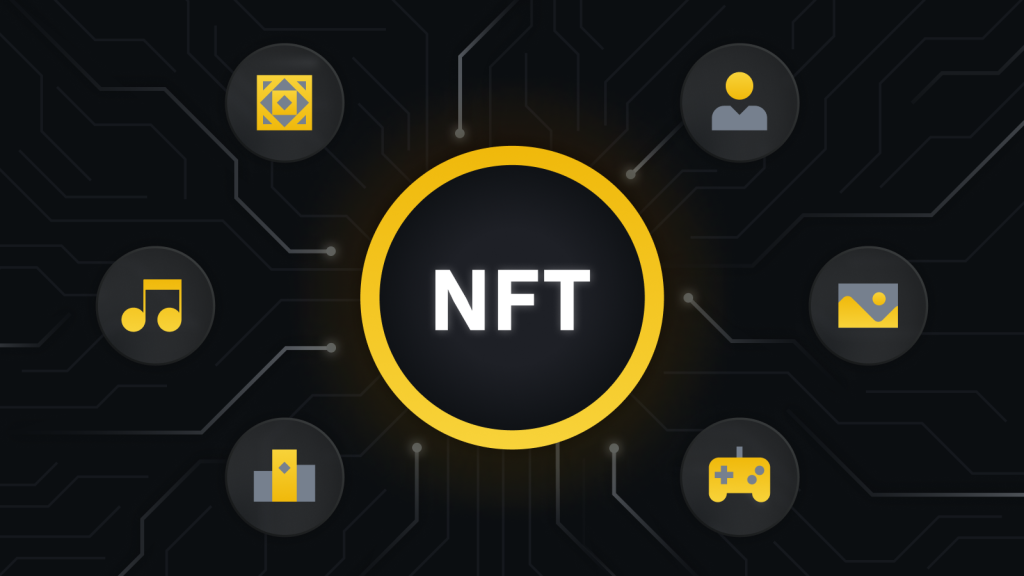The Non-Fungible Token (NFT) market has risen rapidly in recent years, captivating the attention of investors, artists, and collectors. NFTs, which represent unique digital assets on the blockchain, have revolutionized the world of digital ownership, art, and collectibles. However, despite their groundbreaking potential, NFTs have become a source of significant environmental controversy, with concerns about their carbon footprint and sustainability. The energy consumption required to mint, trade, and store NFTs has been a longstanding debate, particularly because many NFTs are built on blockchain platforms like Ethereum, which rely on energy-intensive proof-of-work (PoW) mechanisms.
This article aims to explore the environmental impact of NFTs, the criticisms surrounding their carbon footprint, and the ongoing efforts to make the NFT space more eco-friendly. It will also examine the broader implications of these issues on the NFT market’s future and the potential for sustainable solutions within the rapidly expanding NFT ecosystem.
1. Understanding the Environmental Debate Around NFTs
To fully understand the environmental controversy surrounding NFTs, it is essential to first grasp how NFTs work and why their creation and transactions require such a significant amount of energy.
1.1. The Basics of NFTs and Their Blockchain Infrastructure
NFTs are digital assets that represent ownership or proof of authenticity of unique items, such as digital art, collectibles, or even in-game assets. Unlike cryptocurrencies like Bitcoin or Ethereum, which are fungible and can be exchanged for one another, each NFT is unique and cannot be replaced with something of equal value. This uniqueness is achieved through the use of blockchain technology, where NFTs are minted and verified on a decentralized ledger.
The majority of NFTs are minted on the Ethereum blockchain, which uses a consensus mechanism called Proof of Work (PoW). In this system, miners compete to solve complex mathematical puzzles in order to validate transactions and add them to the blockchain. This process is energy-intensive, as it requires significant computational power to perform these calculations.
Ethereum’s PoW mechanism has long been criticized for its high energy consumption, especially given the increasing demand for NFTs. With the rapid growth of the NFT market, more and more people are using the Ethereum blockchain to mint and trade NFTs, resulting in an exponential rise in the blockchain’s overall energy consumption.
1.2. The Energy Demand: A Growing Problem
The energy consumption of Ethereum’s PoW mechanism is staggering. According to the Cambridge Centre for Alternative Finance, Ethereum’s energy consumption is comparable to that of entire countries, such as Argentina or the Netherlands. A single NFT minting transaction can consume more energy than the average person’s daily energy usage, while large-scale NFT sales and high-traffic platforms contribute to an even higher environmental toll.
To put this in perspective, the creation and sale of high-profile NFTs, like digital art pieces, require a substantial amount of electricity to validate transactions on the Ethereum network. Even though an individual transaction might seem small, the sheer volume of transactions has led to an escalating environmental impact, especially when combined with the massive rise in NFT sales.
2. The Criticisms and Environmental Impact of NFTs
2.1. Carbon Footprint and Global Warming Concerns
The primary environmental concern related to NFTs is their carbon footprint. Since NFTs are mostly minted on PoW-based blockchains, they contribute significantly to greenhouse gas emissions. The process of mining—requiring vast amounts of energy—has a direct impact on global warming, as much of the electricity used by Ethereum’s miners comes from non-renewable sources like coal or natural gas.
Recent reports have highlighted the environmental toll of the NFT boom. According to an estimate from the University of Cambridge, a single Ethereum transaction can produce up to 50 kilograms of CO2 emissions. When this is compounded by the millions of transactions made daily, the NFT market becomes a major contributor to carbon emissions, with some estimates suggesting that Ethereum’s annual carbon footprint is greater than that of entire countries.
Many critics argue that the NFT market is out of alignment with the growing global movement towards sustainability and environmental conservation. As the demand for NFTs continues to soar, so does the energy consumption of blockchain networks, exacerbating the environmental concerns.
2.2. Public Backlash: Environmentalists and Artists Speak Out
The environmental concerns surrounding NFTs have sparked a significant backlash from various communities, including environmentalists, climate activists, and even some artists who are wary of the long-term consequences of their work on the planet.
In particular, some digital artists have expressed regret at the rising environmental cost of minting NFTs. While NFTs offer an opportunity for artists to monetize their work in ways that were previously unavailable, the realization that these digital assets contribute to environmental degradation has led many creators to reconsider their involvement in the NFT space.
Moreover, high-profile individuals in the environmental and tech sectors, such as Elon Musk, have voiced their concerns about NFTs’ environmental impact. Musk, a vocal advocate for sustainability, announced that Tesla would no longer accept Bitcoin payments due to the environmental concerns associated with cryptocurrency mining, prompting further scrutiny of the carbon footprint of blockchain technologies, including NFTs.

3. Efforts to Address Environmental Concerns in the NFT Market
Given the mounting criticisms and the growing public awareness of the environmental issues tied to NFTs, several initiatives and solutions have emerged to address the concerns surrounding their carbon footprint. These efforts are aimed at reducing the environmental impact of the NFT market while maintaining the innovation and creativity that NFTs facilitate.
3.1. Ethereum’s Transition to Proof of Stake (PoS)
The most anticipated development in the effort to make NFTs more sustainable is Ethereum’s transition from Proof of Work (PoW) to Proof of Stake (PoS), which began with Ethereum 2.0. The PoS consensus mechanism significantly reduces energy consumption by eliminating the need for miners to perform complex computations to validate transactions.
In a PoS system, validators are chosen to create new blocks based on the amount of cryptocurrency they hold and are willing to “stake” as collateral. This process is much more energy-efficient, as it requires far less computational power than PoW. The Ethereum Foundation has committed to making this transition in order to dramatically reduce the network’s carbon footprint.
The adoption of PoS would be a game-changer for the NFT market. As Ethereum is the leading platform for NFT transactions, this shift would drastically cut the energy consumption associated with NFT minting and trading. Ethereum 2.0 is expected to lower the energy usage of Ethereum by over 99%, making the NFT market significantly more sustainable.
3.2. The Rise of Eco-Friendly Blockchain Networks
In addition to Ethereum’s efforts, several other blockchain platforms have emerged that prioritize sustainability and lower environmental impact. These networks use more energy-efficient consensus mechanisms, such as Proof of Authority (PoA) or Proof of Stake (PoS), which consume far less power compared to Ethereum’s PoW model.
Notable eco-friendly alternatives include:
- Tezos: Known for its energy-efficient PoS mechanism, Tezos has been promoted as a green alternative for NFT creators. The platform’s low carbon footprint has made it popular among artists and collectors who are concerned about sustainability.
- Flow: Developed by Dapper Labs, the creators of NBA Top Shot, Flow is another blockchain network designed for high-speed transactions with minimal energy consumption. Flow uses a PoS mechanism, which significantly reduces the environmental toll compared to PoW blockchains.
- Polygon: Polygon is an Ethereum Layer-2 solution that operates more efficiently than Ethereum’s mainnet, requiring far less energy. It has been adopted by several NFT platforms as a greener alternative to Ethereum.
These eco-friendly blockchains offer NFT creators and collectors an alternative that aligns more closely with sustainability goals, allowing them to mint, trade, and own NFTs without contributing heavily to environmental degradation.
3.3. Carbon Offsetting and Renewable Energy Initiatives
Another approach to addressing the environmental impact of NFTs is through carbon offsetting. Carbon offsetting involves investing in projects that reduce or eliminate greenhouse gas emissions, such as renewable energy initiatives, tree planting, and methane capture projects. Several NFT platforms and artists have begun to offset the carbon emissions associated with NFT transactions by purchasing carbon credits or supporting environmental projects.
For instance, CryptoPunks creators, along with other prominent NFT projects, have partnered with organizations such as Crypto Climate Accord and NFT artists have committed to donating part of their proceeds to environmental charities. Platforms like Async Art and Rarible have also introduced carbon offsetting measures, ensuring that their NFTs have a minimal net environmental impact.
4. The Road Ahead: Balancing Innovation and Sustainability
As the NFT market continues to expand, the challenge will be to find a balance between fostering innovation and ensuring sustainability. While NFTs offer exciting possibilities for creators, artists, and investors, the environmental impact of these technologies cannot be ignored.
The transition to more energy-efficient consensus mechanisms, the growth of eco-friendly blockchain networks, and the increased use of carbon offsetting are promising steps toward mitigating the negative environmental effects of NFTs. However, much work remains to be done to ensure that the NFT space grows in a way that supports both creativity and environmental sustainability.
4.1. The Role of Regulation and Industry Standards
The future of NFTs will likely involve the creation of industry-wide standards and regulations aimed at promoting sustainability. Just as the world is increasingly focused on carbon neutrality and sustainable practices, NFT platforms, creators, and investors will need to adopt practices that align with global sustainability goals.
Governments, environmental organizations, and the blockchain community must collaborate to establish transparent standards for NFT carbon footprints, create incentivization programs for eco-friendly platforms, and encourage blockchain networks to adopt more sustainable technologies.
5. Conclusion: A Greener Future for NFTs
NFTs have the potential to revolutionize the digital world, offering new opportunities for creators and collectors. However, the
environmental concerns surrounding NFTs cannot be overlooked. As the market grows, addressing these issues will be critical to ensuring that NFTs are not only economically viable but also environmentally responsible.
The transition to eco-friendly blockchain platforms, the move to Ethereum 2.0, and the adoption of carbon offsetting measures are all promising steps toward a more sustainable NFT ecosystem. The future of NFTs lies in finding innovative solutions that allow for the continued growth of the market without sacrificing the planet’s future. The road ahead is challenging, but with the right initiatives, NFTs can become a force for positive change in both the digital and environmental realms.

















































